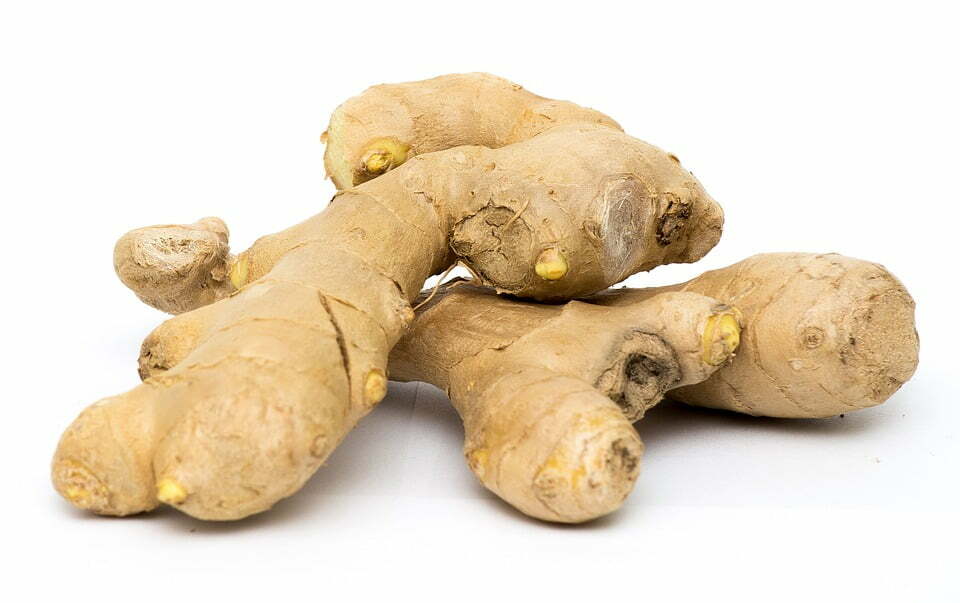Ginger (Zingiber officinale), with its fiery flavour and potent health benefits, is one of the world’s most beloved spices. From its humble beginnings in ancient trade routes to its central role in modern kitchens, ginger has become indispensable in both culinary and medicinal traditions.
A Brief History
Native to Southeast Asia, ginger has been cultivated for over 5,000 years. Ancient Chinese, Indian, and Middle Eastern cultures prized ginger for its medicinal properties and as a luxury spice. It later made its way to Europe via spice trade routes, eventually becoming a staple in kitchens worldwide.
What Does Ginger Look Like?
Ginger is a rhizome—a thick, knotted underground stem. Its thin, tan skin conceals a fibrous, juicy flesh that can range from pale yellow to golden. Ginger’s distinctive spicy, citrusy aroma comes from gingerol, the compound responsible for much of its flavour and health benefits.
Culinary Uses of Ginger
Ginger’s versatility allows it to shine in a wide range of dishes:
- Savoury Dishes: It’s a cornerstone of Asian cuisine, adding depth to stir-fries, curries, and marinades. In Middle Eastern dishes, ginger enhances stews and kebabs.
- Baked Goods: Ginger is the star of classic desserts like gingerbread, ginger snaps, and cakes.
- Beverages: Fresh ginger is brewed into teas or infused into cocktails for a spicy kick. Ginger ale and beer are beloved fizzy drinks that showcase its flavour.
- Condiments: Pickled ginger (gari) is served with sushi, while ginger paste adds vibrance to sauces and soups.
Health Benefits of Ginger
Ginger is a powerhouse of nutrients and bioactive compounds, offering a myriad of health benefits:
- Digestive Aid: Ginger has been used for centuries to relieve nausea, indigestion, and bloating. It’s especially effective for motion sickness and morning sickness.
- Anti-inflammatory Properties: The gingerol in ginger helps reduce inflammation and pain, making it useful for conditions like arthritis.
- Immune Booster: Ginger’s antimicrobial properties support the immune system and help fight colds and flu.
- Blood Sugar Regulation: Studies suggest ginger may help lower blood sugar levels and improve insulin sensitivity.
- Anti-nausea Remedy: It’s a go-to for soothing nausea caused by chemotherapy, pregnancy, or post-surgery recovery.
Tips for Using Ginger in Your Cooking
- Fresh Ginger: Grate or mince it for soups, stir-fries, or marinades.
- Ground Ginger: Use it in baked goods, spice rubs, or curry powders.
- Candied Ginger: Enjoy it as a snack or chop it into desserts.
- Ginger Tea: Steep thin slices of fresh ginger in hot water with a drizzle of honey and lemon for a soothing drink.
Traditional and Modern Uses
In Ayurvedic and traditional Chinese medicine, ginger has been used to treat digestive issues, improve circulation, and alleviate respiratory problems. Modern research continues to support many of these applications, cementing ginger’s reputation as a natural remedy.
Precautions
Although ginger is safe for most people, consuming large amounts may cause heartburn or irritation in some individuals. Those taking blood-thinning medications or with gallstone issues should consult a doctor before using ginger supplements.
The Spice of Life
Whether you’re brewing a comforting tea, spicing up a curry, or baking holiday treats, ginger’s unique flavour and health benefits make it an essential addition to any kitchen. Its rich history and versatile nature ensure that it will continue to be cherished for generations to come.
What’s your favourite way to use ginger? Share your ideas and recipes in the comments below!

